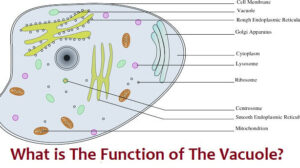Lysosome Functions – Lysosome is an organ found in almost all cells. One of the functions of lysosome is related to digesting food.
Lysosomes are small, spherical organelles bound to a membrane and have a diameter of about 0.25 to 0.5 um.. Lysosomes can almost be found in all cells except red blood cells and skin cells that experience hardening or thickening.
The content in lysosomes includes acidic hydrolases, nucleic acids, enzymes that remodel proteins and carbohydrates at the acidic pH. Some say that lysosomes are the digestive system of cells.
The existence of lysosomes certainly provides benefits and functions. Among the many functions possessed, the main function of lysosomes is for intra-cell digestion. The material digested by lysosomes comes from inside and outside the cell itself.
Lysosome Function
Lysosomes play a role in the demolition and recycling facilities. Lysosomes help degrade materials taken from outside the cell and worn-out components from inside the cell.
In addition to being able to break down polymers, lysosomes are able to fuse with other organelles & digest large structures or cellular debris; Through cooperation with phagosomes, they can perform autophagy, cleaning damaged structures. Similarly, lysosomes are able to break down viral or bacterial particles in macrophage phagocytosis.
To understand the function of lysosomes, the easiest way is to look in more detail at the enzymes they produce. There are many enzymes, but most importantly, it breaks down almost all types of substances when put together.
The function of lysosomes is as follows:
- Digesting food substances results from phagocytosis and pinocytosis.
- Digesting food reserves when lacking food.
- Destroys cell organelles that have been damaged.
- Destroying objects that are outside the cell organelles, such as spe**rm that secrete enzymes in order to destroy the cell wall of the ovum during fertilization.
- Neutralize substances that have carcinogen properties that can cause cancer.
- Self-destruction of cells, by releasing all the enzymes that are in the lysosome.
- The release of enzymes out of the cell.
A full report on their role in various cellular processes is described below.
Autophagy
Autophagy is an intracellular process in which cells damage their own components using lysosome machinery and recycle molecules. Broken macromolecules, defective proteins, malfunctioning proteins, long-lived proteins, broken proteins and all old organelles are broken down by lysosome enzymes.
A phospholipid membrane forms around the target component, thus forming a vesicles called autophagic vacuole. These vacuoles then fuse with primary lysosomes where hydrolase digest macromolecules for sugars, amino acids and nucleotides, which are the main foundations of each cell.
Useful digestive products are released into the cytosol and can be utilized in the synthesis of new macromolecules and organelles, while unused products are released outside the cell.
In addition, during starvation, or limited nutrient conditions, normal organelle autophagy occurs, thus helping to maintain the level of nutrients necessary for normal cellular processes.
Role in Endocytosis and Phagocytosis
Endocytosis is the process for the uptake of foreign materials. Phagocytosis is a special form of endocytosis in the body, such as dead cells, cell debris, bacteria, viruses, etc., are swallowed. Uptake occurs through special vesicles that fuse with lysosomes followed by degradation of foreign entities by hydrolysis. Directly or indirectly, both of these processes play an important role in the destruction of pathogens.
Role in Apoptosis
Apoptosis or programmed cell death is a very complicated mechanism of cellular sui**cide to control.. Such mechanisms are essential during embryonic development and destruction of old cells, infected cells and cells with DNA damage.
Apoptosis begins through various pathways in the cell, one of which is the lysosome-mediated apoptosis pathway. Certain proteases present in lysosomes have been identified as one of the initiators for such cell death.
These proteases cause a series of signals and are characterized by damage to cellular components. These components are packed into vesicles called apoptosis bodies that are swallowed by neighboring cells. The lysosomes of neighboring cells carry the digestion of the rest of these components.
Role in fertilization
Lysosomes are also able to release their digestive enzymes outside the cells to bring extracellular digestion. During fertilization, the contents of lysosome spe**rm are released to the outside of the cell to carry digestive barrier membrane around the egg. It facilitates the fusion of spe**rm and egg cells.
In addition, after two cells fuse, the mitochondria of the spe**rm are destroyed by the egg lysosome machine. Inherited spe**rm mitochondria tend to accumulate genetic mutations due to the high metabolic activity of spe**rm. Therefore, they need to be removed from the cells to avoid the transfer of mutations of the resulting embryo.
Cell Membrane Repair
Conditions of mechanical stress and the action of pathogens can cause patch disturbances or the formation of pores in certain cell membranes. Lysosome secretion diffuses with the cell membrane in a location close to the damaged patch. This leads to the release of hydrolase outside the cell. From these hydrolases, a special hydrolase called Acid sphingomyelinase (ASM) causes the internalization of the damaged patch by the cell.
In addition, the fusion of lysosomes with lipid membranes provides additional and prevents narrowing of cellular boundaries.







